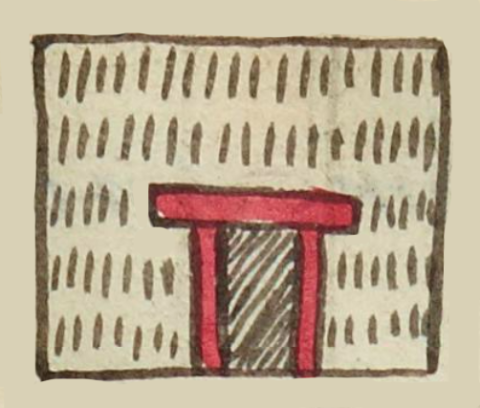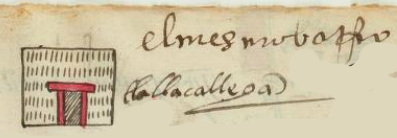Tlallancalecan (MH782v)
This is a black-line drawing of the simplex glyph for the place name Tlallancalecan (spelled Tlalancaleca today, referring to a location in the state of Puebla). The place name may translate something like “Where They Have Houses Underground.” The glyph shows a frontal view of a rectangular house (calli) with an open shaded doorway and a red wooden beam frame around the door. The house facade has hash marks that make it look thatched, perhaps. But perhaps this pattern is meant to convey the look of a cultivated field (tlalli), either semantic or phonetic for the first part of the place name (tlallan, which means underground).
Stephanie Wood
There is nothing obviously underground about this house, which makes the interpretation a bit precarious, unless the “land” or “ground” part is just conveyed on the surface of the exterior.
Stephanie Wood
tlallagalegā
Tlallancalecan
Stephanie Wood
1560
Jeff Haskett-Wood
tierras, sementeras, casas, edificios subterráneos, nombres de lugares, pueblos, barrios

tlalli, a piece of land, https://nahuatl.wired-humanities.org/content/tlalli
calli, house/hut, https://nahuatl.wired-humanities.org/content/calli
-can, locative suffix, https://nahuatl.wired-humanities.org/content/can-2
Donde Tienen Casas Subterráneas
Stephanie Wood
Matrícula de Huexotzinco, folio 782v, World Digital Library, https://www.loc.gov/resource/gdcwdl.wdl_15282/?sp=639&st=image.
This manuscript is hosted by the Library of Congress and the World Digital Library; used here with the Creative Commons, “Attribution-NonCommercial-ShareAlike 3.0 License” (CC-BY-NC-SAq 3.0).






